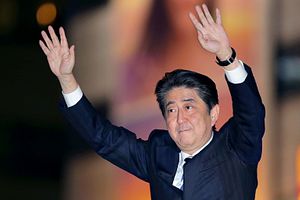When he returned to Japan’s premiership in December 2012, Shinzo Abe seemed a new man. He looked physically fit and was confident in articulating his goals for Japan. In the fall of 2012, Japan was on edge as tensions rose with China over the Senkaku Islands; Japan was also still grappling with its recovery from the devastation of the 2011 “triple disaster.” Three difficult years of Democratic Party of Japan (DPJ) governments had exacerbated anxiety within Japan about the country’s future. Prime Minister Abe’s new government was seen as a welcome return to stability and competence.
Initially, it was Abe’s economic agenda that won over most voters, but Japan’s security challenges were also worrisome. In 2012, a new and less predictable leader emerged in North Korea and a new president was elected in South Korea who put historical legacy issues at the forefront of her agenda. China sent government ships to the waters surrounding the Senkakus, openly challenging administrative control over the islands in the East China Sea.
A considerable amount of Abe’s energy was spent on sustaining a strong political foundation. Having been cast out of office once, Abe and his party, the Liberal Democratic Party (LDP), were determined to build a political foundation that would ensure their tenure in office was uninterrupted by political turmoil. Indeed, Abe’s political fate was so thoroughly linked to the fate of the party, and vice versa, that no one within the LDP openly challenged the prime minister’s choice of priorities.
Shinzo Abe’s leadership has brought significant change to Japan. His program of economic revitalization, his sweeping security policy reforms, and his ability to sustain the political support necessary to focus on addressing Japan’s myriad policy challenges have distinguished Abe’s five years in office.

































